(Get free painting tips and plein air painting techniques sent straight to your inbox or on my social media.)
What Is Atmospheric Perspective?
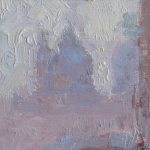
Atmospheric perspective refers to the effect the atmosphere has on the appearance of objects when you look at them from a distance. You see objects further back into the distance less clearly and their color changes in value, saturation and hue. As an artist you can increase the mood and feeling in your work by exaggerating these effects in your painting. This creates a greater illusion of depth and distance and helps to establish the mood and feeling of the landscape. When you are painting landscapes this mood and feeling is an essential part of its Visual Poetry. Atmospheric perspective is also called aerial perspective.
What is the difference between linear perspective and atmospheric perspective?
There are two types of perspective that an artist can use to create a feeling of depth and distance in a painting – atmospheric perspective and linear perspective. Atmospheric perspective refers to how the atmosphere affects the color of things we see. Linear perspective, on the other hand, refers to how distance affects the shape of things, and makes objects appear smaller as they recede into the distance.

In the photograph above, you can see that the hills further away become progressively lighter and grayer. The intense reds and oranges of the foreground rocks become duller in the distant hills. These effects are due to the effects of atmospheric perspective.
The Three Main Effects Of Atmospheric Perspective
As the distance between you and an object increases:
- The contrast between the object and its background decreases, and the contrast of the details within the object also decreases. Usually the value of the object will become lighter.
- The colors of the object become less saturated and more gray.
- The colors of the object shift around the color wheel towards the background color, which is usually cooler and more blue.
Changes In Saturation Due To Atmospheric Perspective
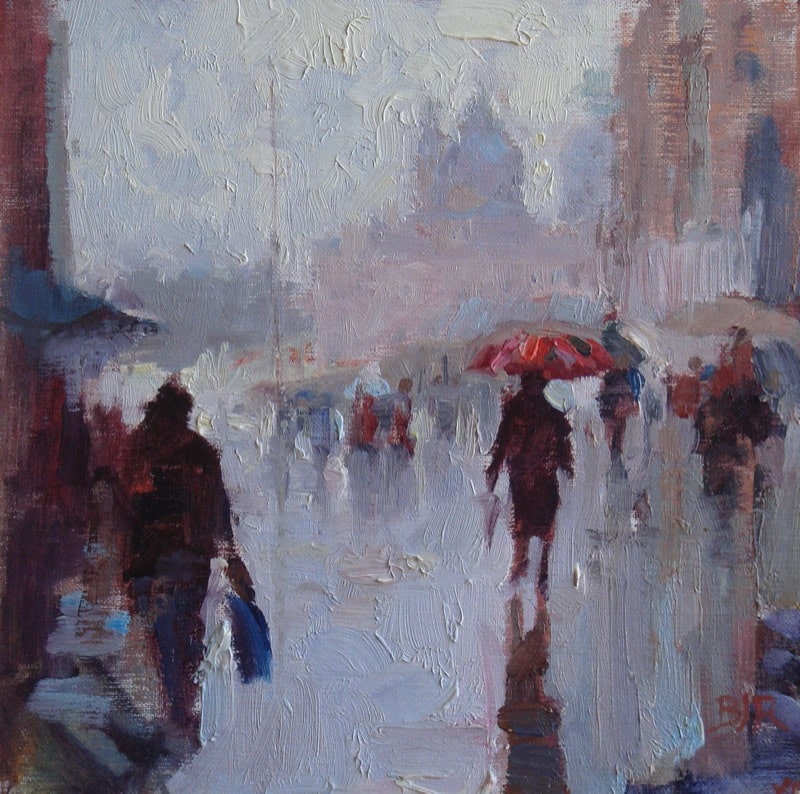
In this painting of a street in Venice, you can see how I used grayer colors to depict the distant buildings, compared with the much more saturated colors I used in the foreground figures.
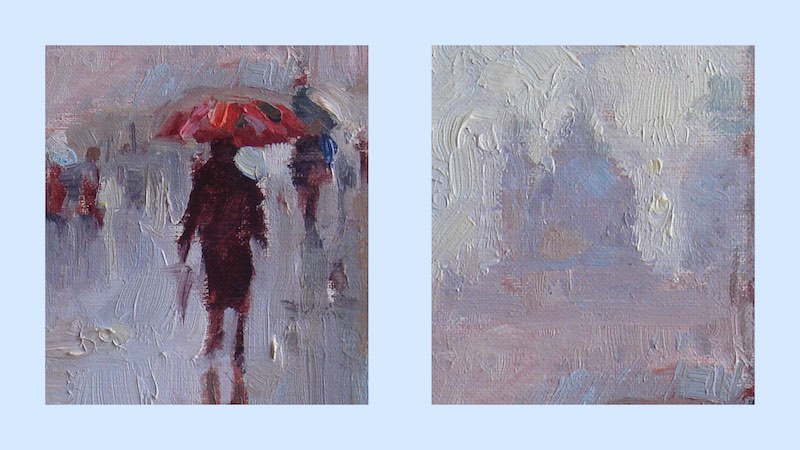
These figures in the foreground are painted with vivid high saturation colors. These reds and violets are used straight from the tube with very little mixing.
The buildings in the distance are painted using low saturation grays. The effect of moisture in the atmosphere has caused these buildings to appear grayer. You can compare these grays with the more saturated browns used in the buildings in the street.
Changes In Value Due To Atmospheric Perspective
The second effect of atmospheric perspective is on the value of objects. The value of objects further away gets closer to the value of the sky at the horizon. This means that during daylight, the values of objects will get lighter the further away they are. In a nocturne, objects further away will get darker, and closer to the value of the dark night sky.
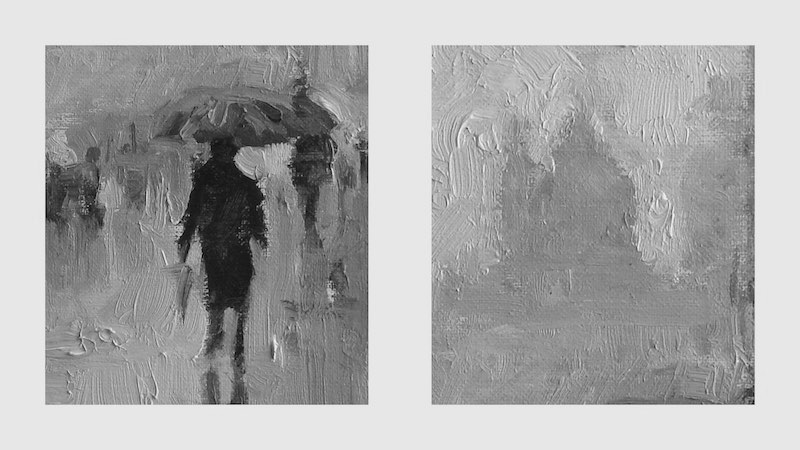
In the foreground you see darker values and there is a greater contrast between the light and dark shapes.
In the distance the darks become lighter and there is less contrast between the lights and darks.
Changes In Hue Due To Atmospheric Perspective
The third change you see in objects as they move further away from you is in their hue, or color. The colors of objects change by moving across the spectrum, or around the color wheel. If you consider the three primary colors: red, yellow, and blue, each of them drops out of the landscape at different distances. The first color to drop out is yellow, then red, and finally blue.
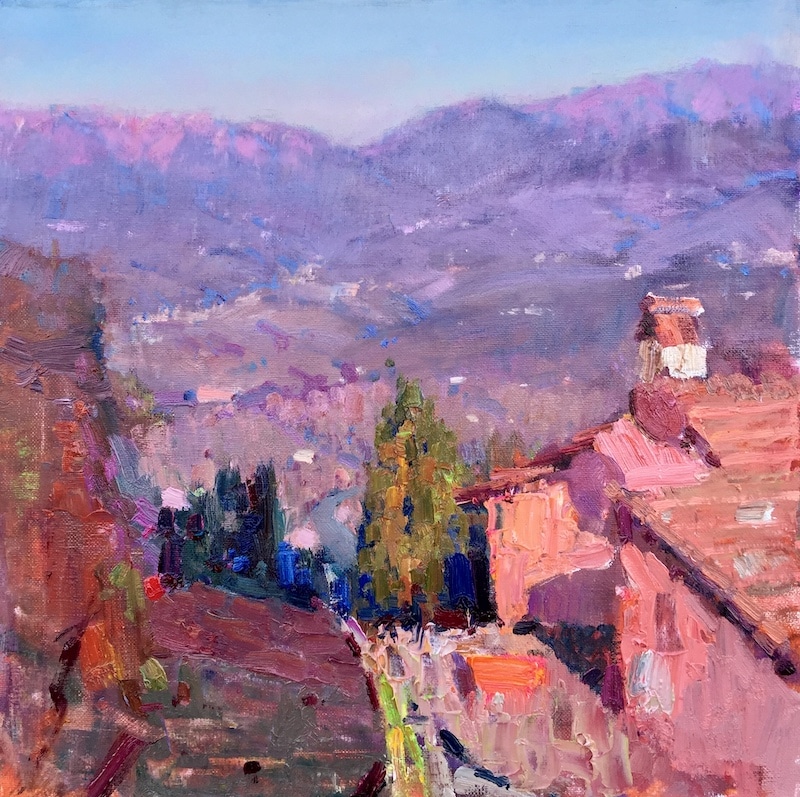
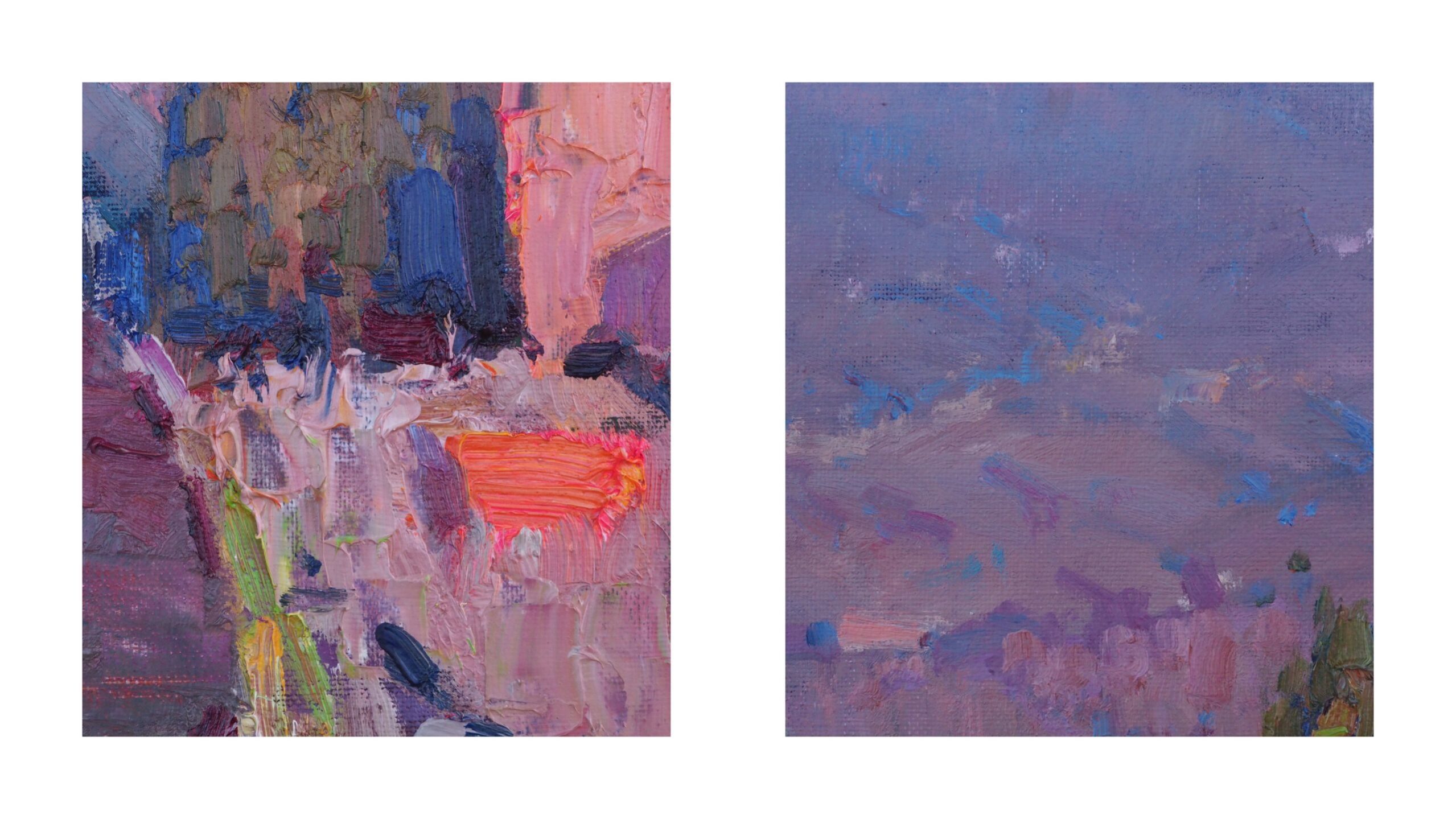
In this painting you can see bright oranges, pinks, and yellow greens in the foreground. These colors give way to red violets in the middle distance, as the yellow hue disappears from the landscape. Finally in the far distance, the red violets turn to blue violets and blues, as the red hue drops out of the landscape colors.
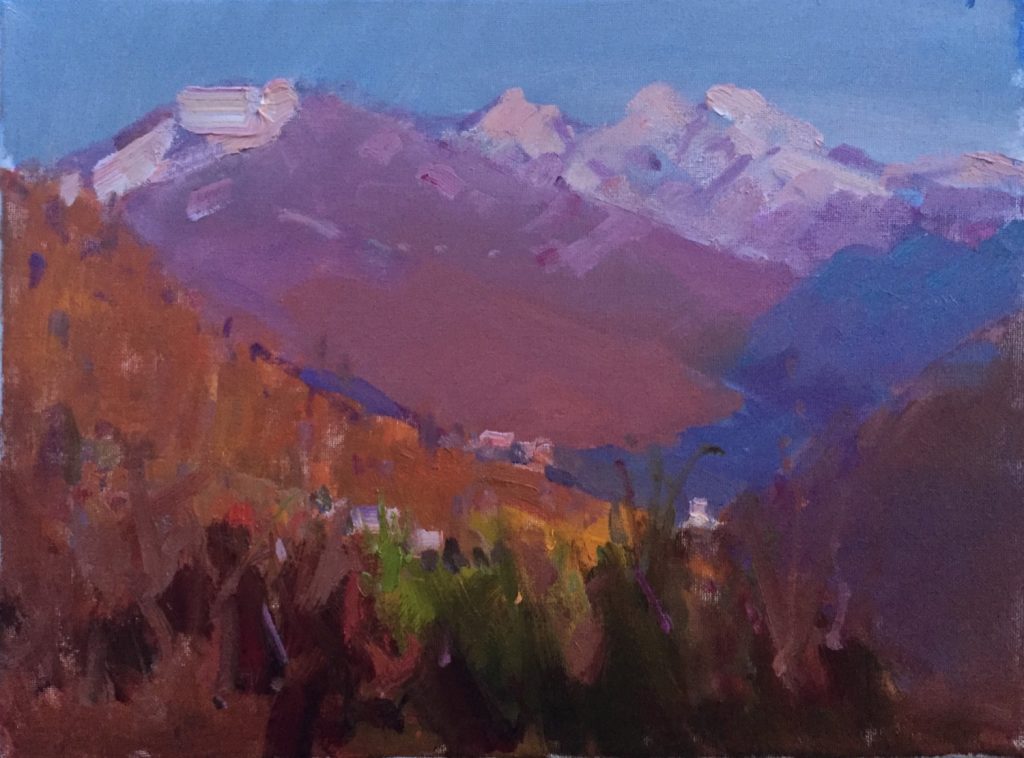
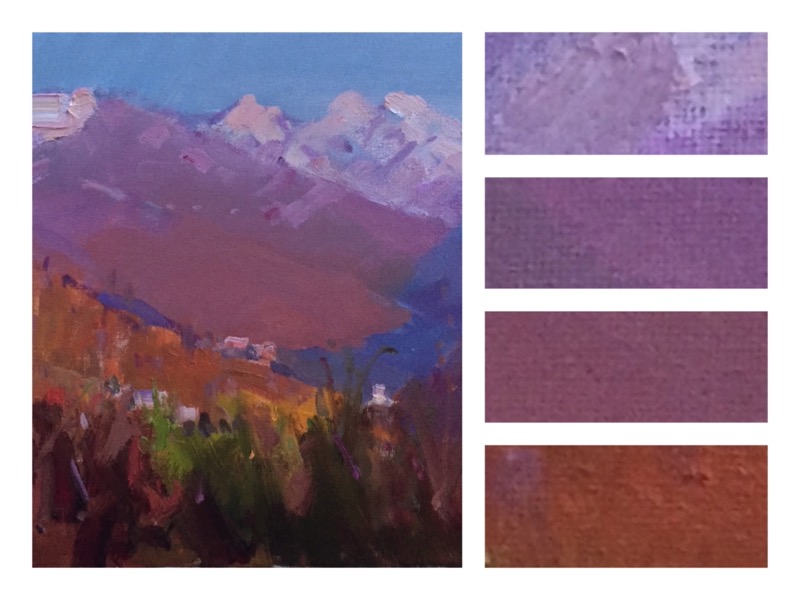
Here you can see the systematic changes in color from the areas that are closer to you, compared with those further away from you.
Effects At Sunrise And Sunset
Although the colors of objects further away are usually cooler and bluer, there is an exception around sunrise and sunset. At these times of the day, the background color is more reddish. Since the color of objects further away tends towards the background color, these mountains too will appear more reddish rather than blue.
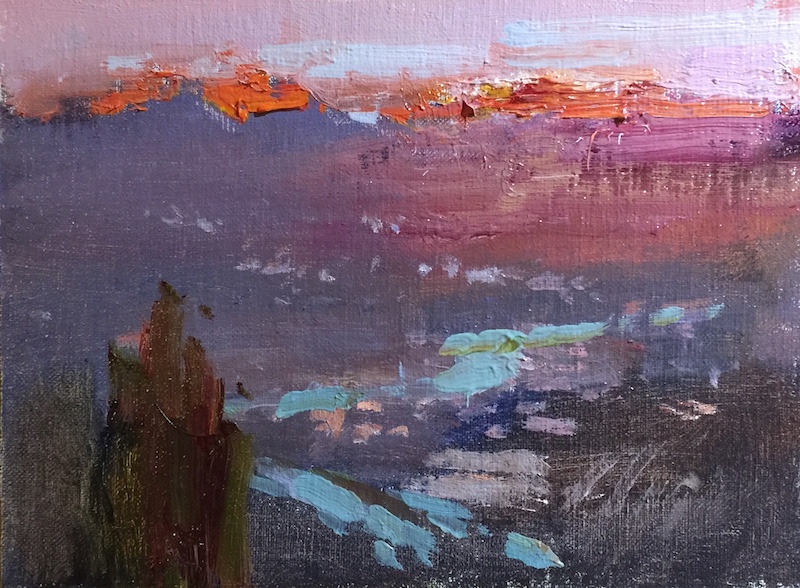
The mountains in the distance are redder because they reflect the warm light from the sunset sky.
History Of Atmospheric Perspective In Art
The concepts of atmospheric perspective have a long history. It was used in fresco painting in ancient Rome. For example, here are two frescoes created as early as 30 BCE.
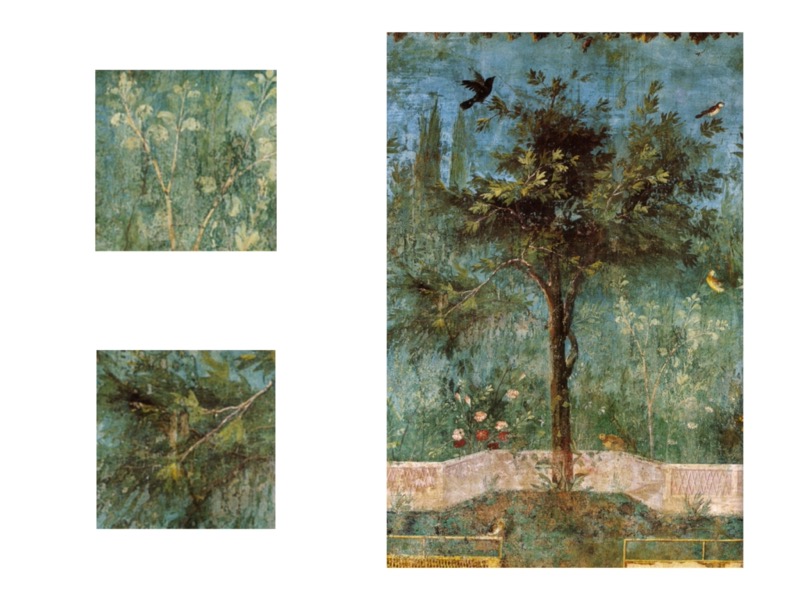
In this Garden Room Fresco from the Villa of Livia in Prima Porta, Italy you can see the warm greens in the foreground, and cooler blue greens in the background.
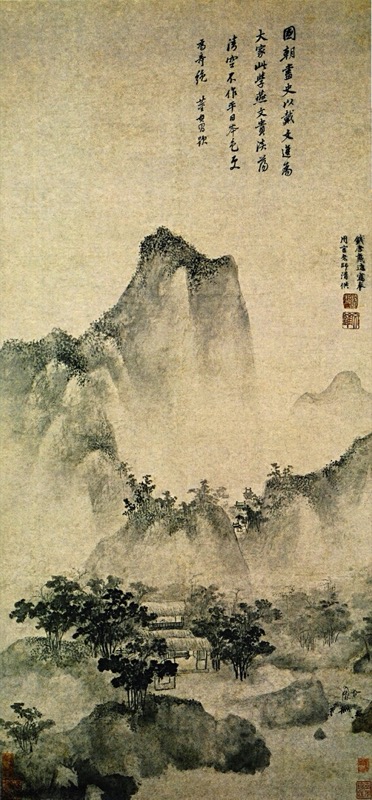
Here you can see the use of light ink washes to suggest distant hills.
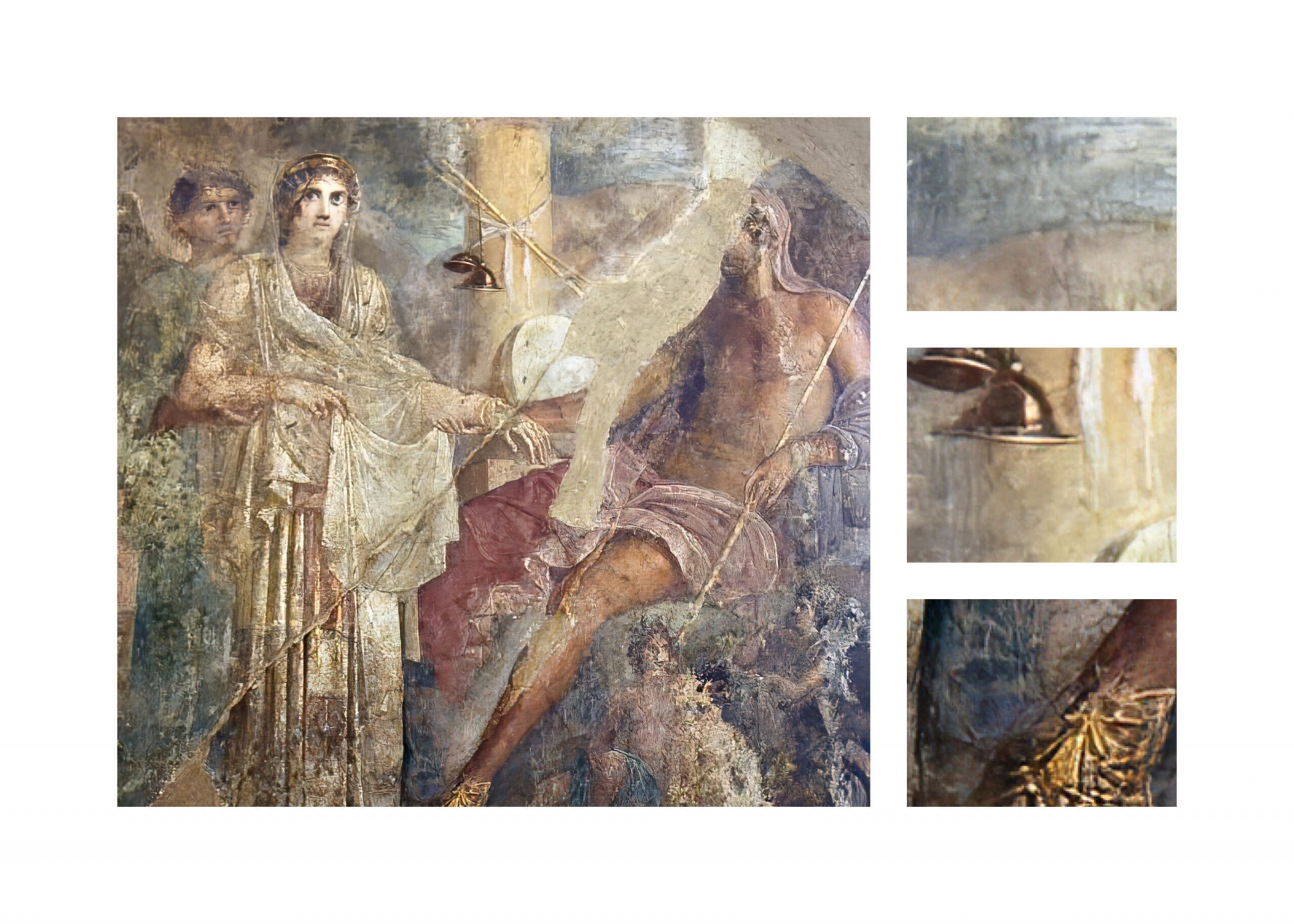
In this fresco you can see the changes from the saturated colors of the foreground objects to the less saturated colors in the background.
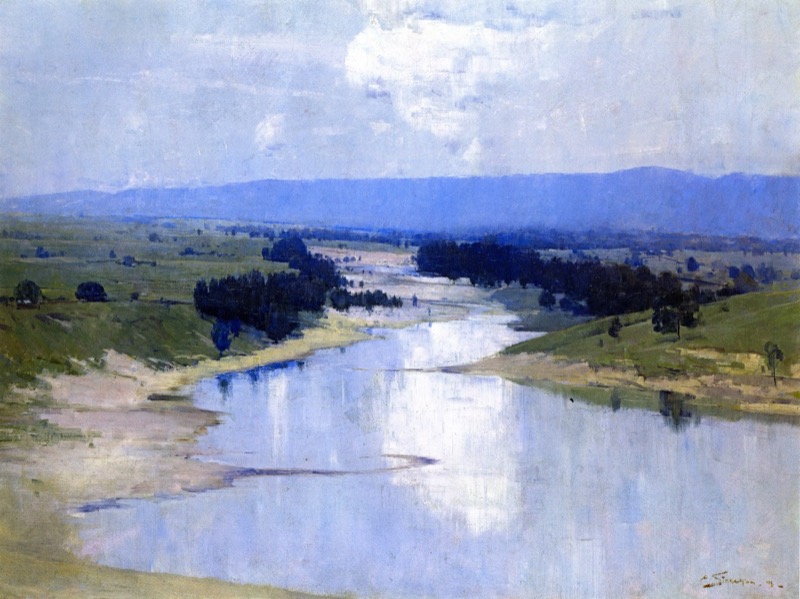
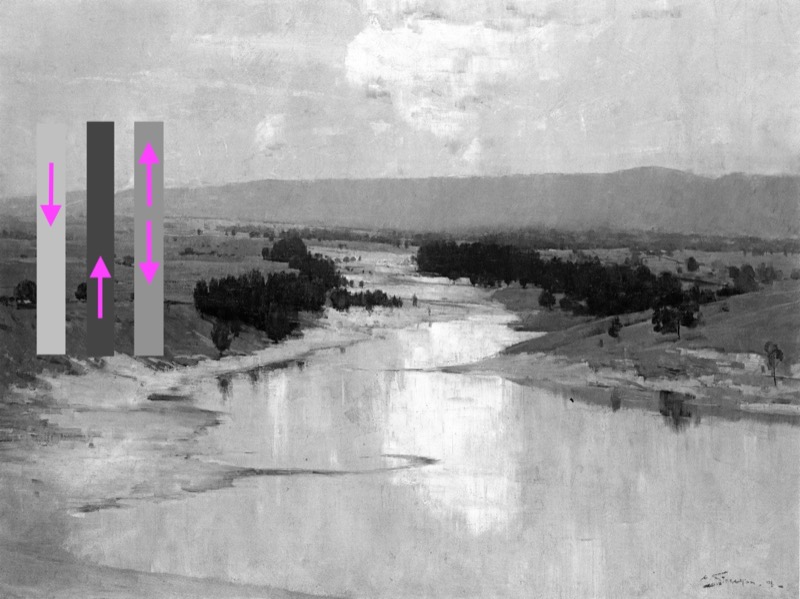
Later artists advanced these techniques to give paintings more realism and convey the poetry of the landscape. Here you can see the steady transition of value from darks in the foreground to lighter grays in the distant hills.
Some of my paintings showing the use of atmospheric perspective in art
Here are a few of my own paintings that show the clear use of the principles of atmospheric perspective (or aerial perspective) in order to give a feeling of depth in the landscape.
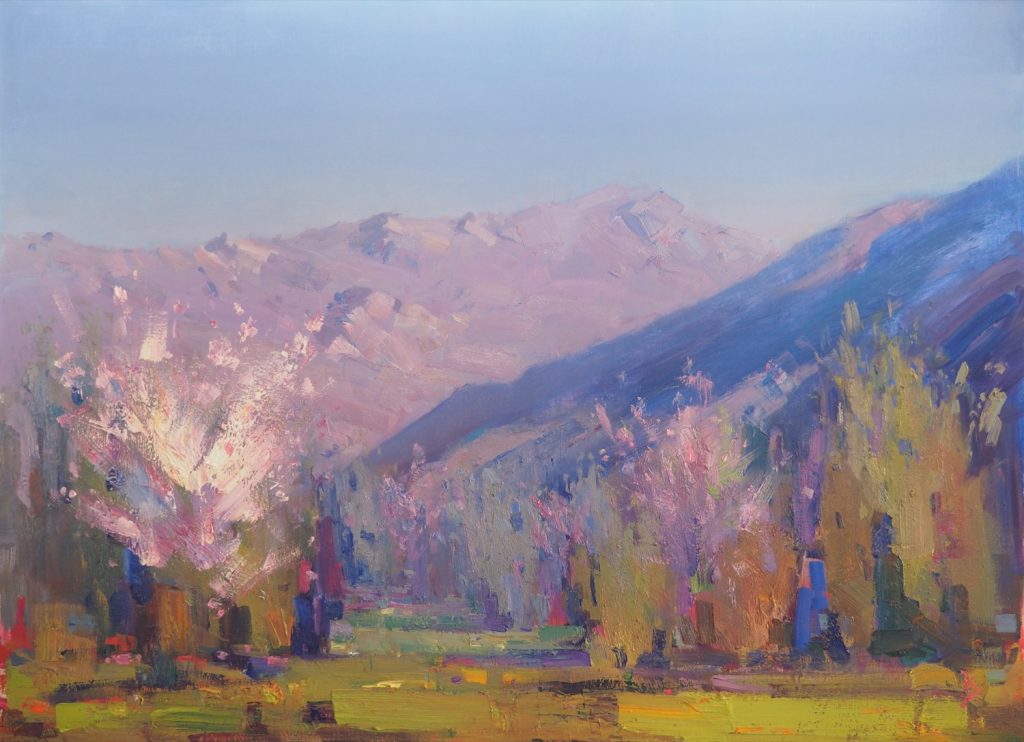
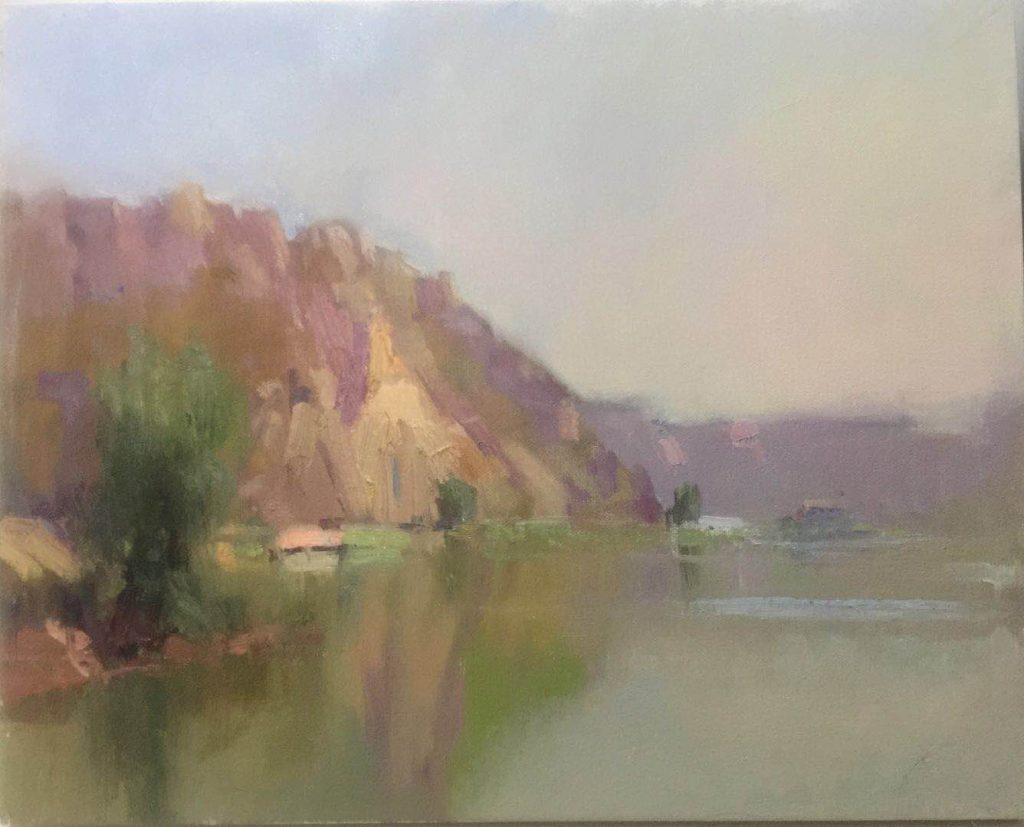
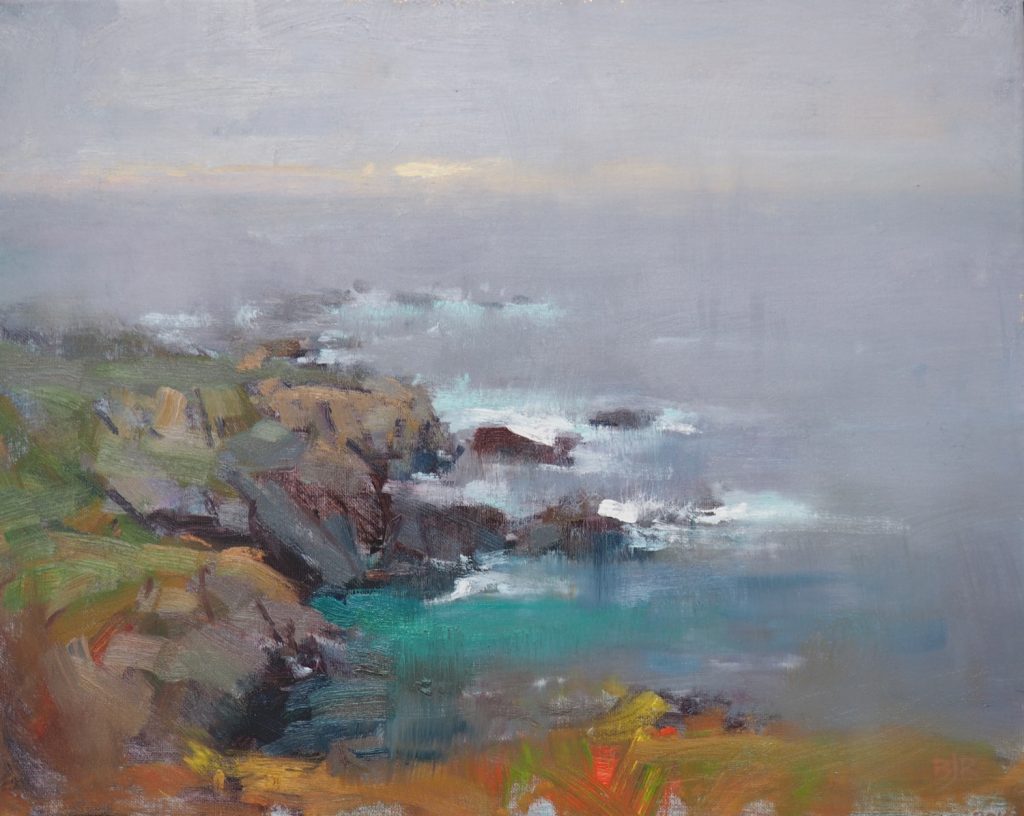
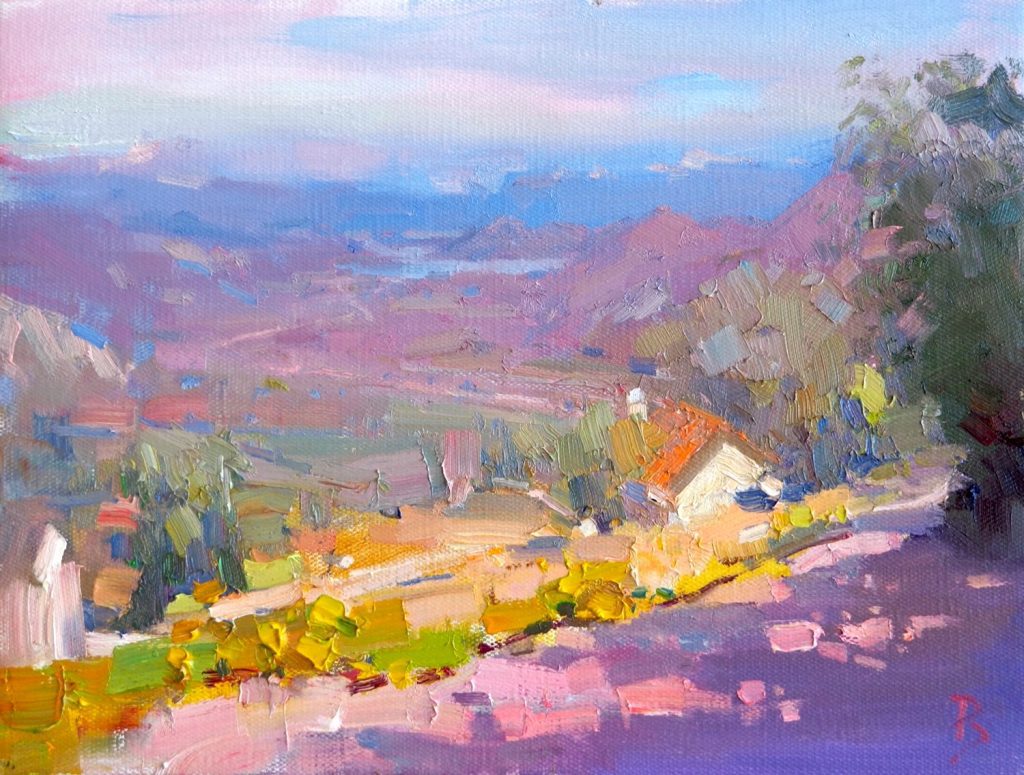
The Optical Science Behind Atmospheric Perspective
In daylight, the color of objects in the distance appears to change because the light in the atmosphere becomes dispersed. As light strikes individual air molecules, water vapor, smoke, and other air pollutants, it scatters in multiple directions. The scattered light interferes with the light reflected directly from the object. This reduces the contrast between the object and the atmosphere around it (lit by the light of the sky). Blue light, which has a short wavelength, is scattered more than other colors with a longer wavelength. This is why the sky usually appears blue and why distant objects appear bluer than those close to the viewer.
Night Light
Another type of scattering is caused by the oscillating electric polarization of light particles, called Rayleigh scattering. As light passes through the earth’s atmosphere, the shorter wavelengths (blues and greens) are scattered, which creates the blue color in the sky overhead. However, when the sun is low near the horizon where the atmosphere between the sun and the
viewer is much denser, the longer wavelengths of red and orange are able to pierce the atmosphere surrounding the light source when the scattered shorter wavelengths cannot. This is why the sky appears redder at the horizon at sunrise and sunset even when the sun itself is not visible.
This same effect takes place around self-luminous objects, as well, such as a lightbulb at night. The longer wavelengths are more apparent directly around the light source but quickly disperse and become cooler in color as they move away into the surrounding atmosphere. This dispersion reduces the color contrast with their darker background.
For more information see Rayleigh scattering.
FAQ Summary
Why is atmospheric perspective important?
Atmospheric perspective (sometimes called aerial perspective) is important because without it your paintings will appear as if they have no depth to them. It is an essential part of the mood of any landscape painting.
What are two types of perspective?
The two types of perspective are linear perspective and atmospheric perspective (or aerial perspective).
What three things define atmospheric perspective?
Atmospheric perspective (or aerial perspective) affects three properties of color. It affects the hue (what we normally think of as color), the value (how light or dark something is) and the color saturation (how intense or colorful an object is).
How do you achieve atmospheric perspective?
You can simulate the effects of atmospheric perspective by using grayer and more neutral color in the distance, and by mixing more blue into those objects further away. Keep the value contrast higher for objects in the foreground, and lower in the background.
Who invented atmospheric perspective?
Atmospheric (or aerial ) perspective has been used for a very long time in both eastern and western art. It was used in Roman times in fresco paintings. The value transitions in atmospheric perspective were used in traditional Chinese painting, and by Renaissance painters such as Leonardo da Vinci. Atmospheric perspective was explained with varying degrees of accuracy, by polymaths such as Leon Battista Alberti and Leonardo da Vinci.
What causes atmospheric perspective?
Atmospheric perspective is caused by the scattering of light air molecules and by particles in the air. The more the light is scattered between an object and the viewer’s eye, the hazier the object will appear. And because blue light is scattered more than other wave lengths, objects farther away appear bluer than objects closer to the viewer.
Thank You
Thank you for taking the time to read this article. I hope you find it useful. If you would like to get free painting tips by email, please sign up for my free tips newsletter.
If you are interested in a structured approach for learning how to paint, take a look at my online painting classes.
Happy painting!
Barry John Raybould
Virtual Art Academy
What The Students Are Saying
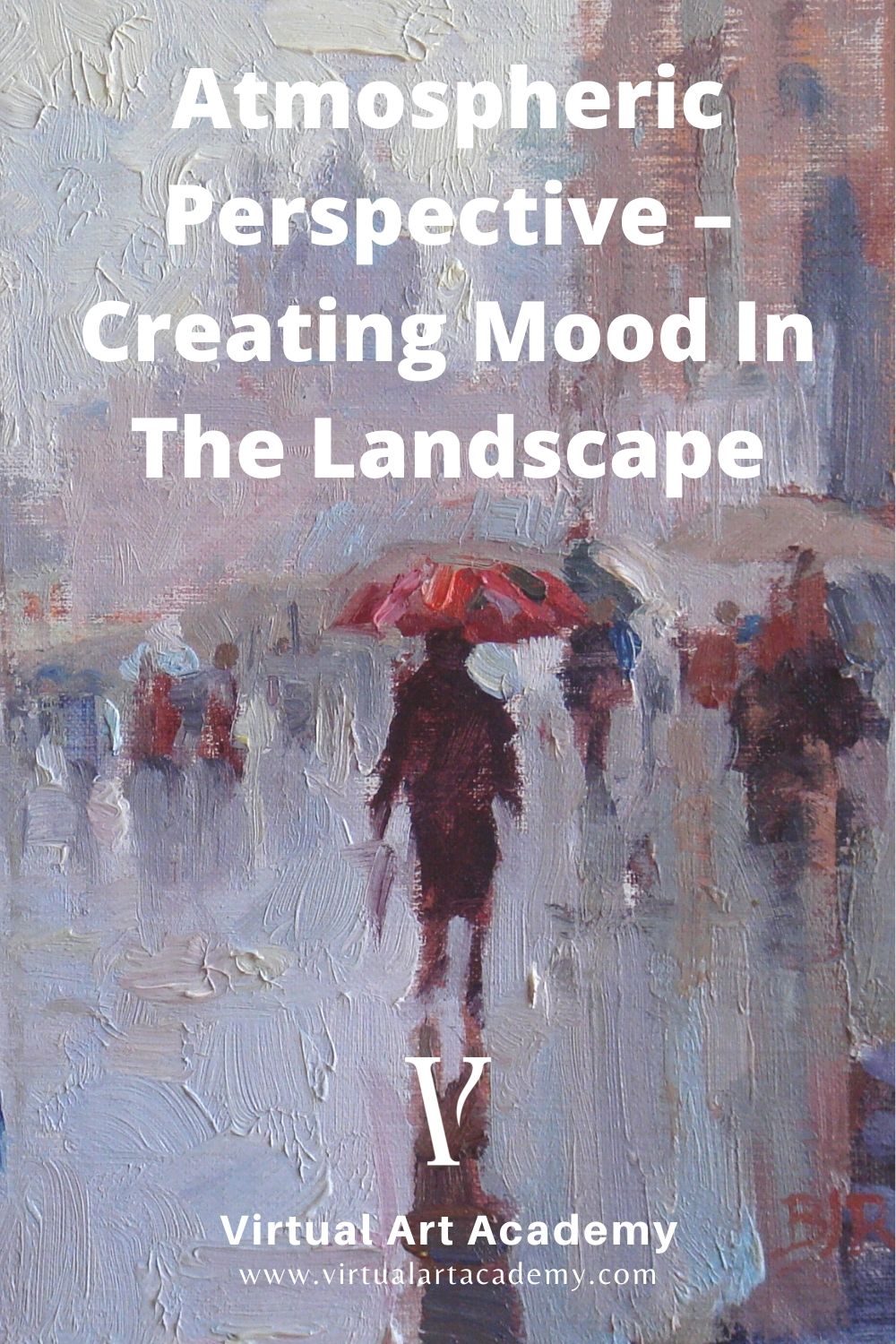
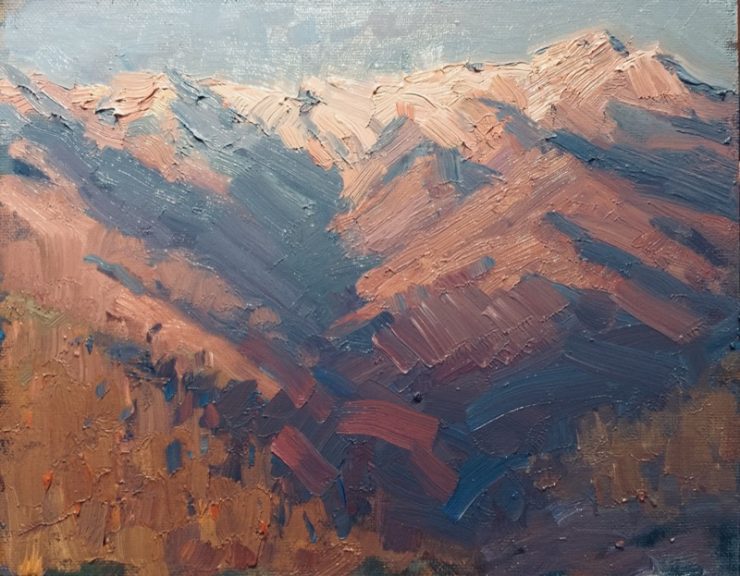










Nicely explained ! thank you
Fab explanation of a tricky but vital concept. Thank youBarry
you are welcome Sarah. Atmospheric perspective is something I pay a lot of attention to in my work as it accounts for the mood of a landscape painting more than anything else. Glad it helped you. 🙂
Barry
This was so clear! (no, not an intentional pun)
Thank you.